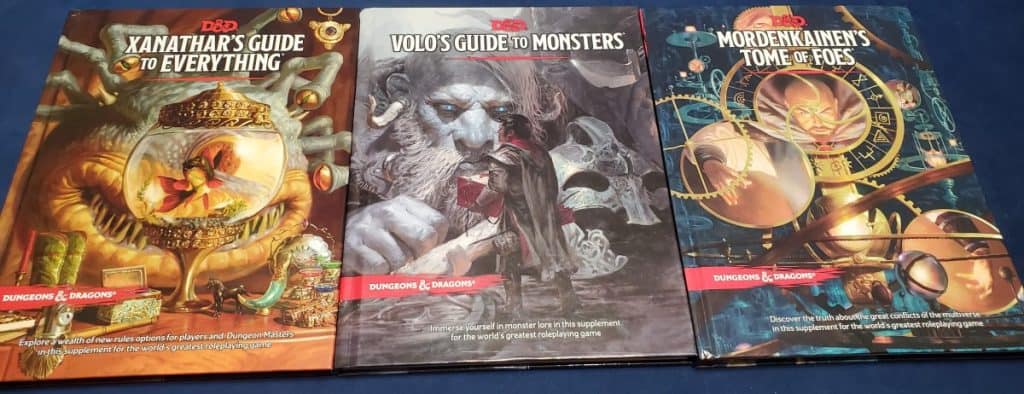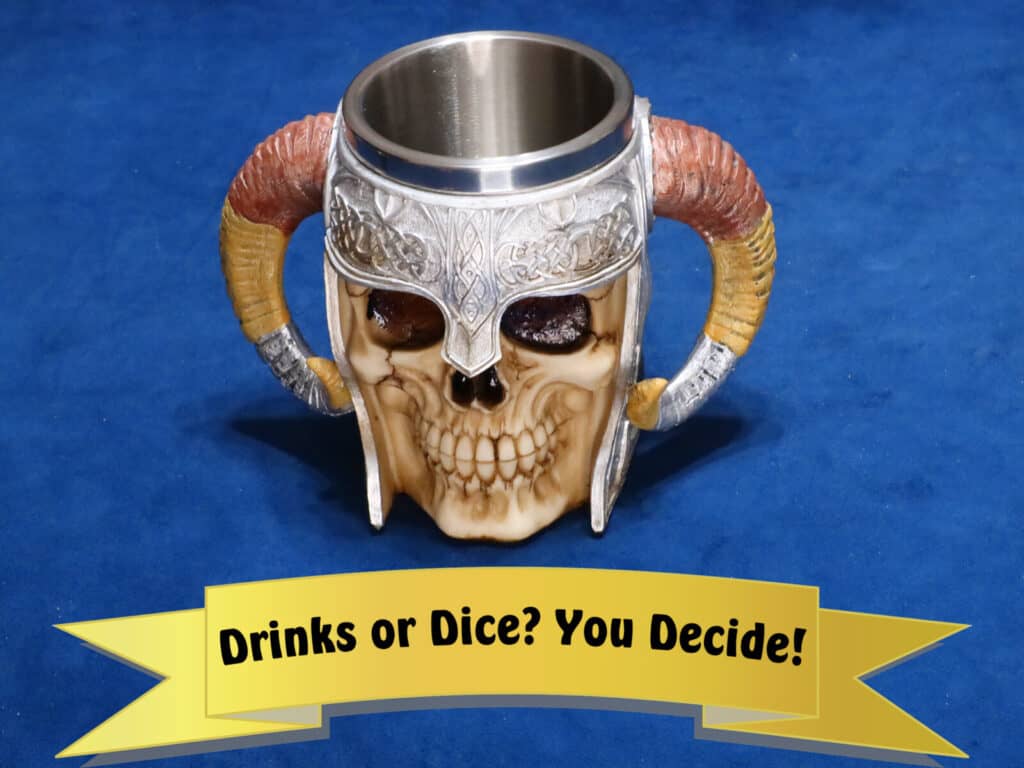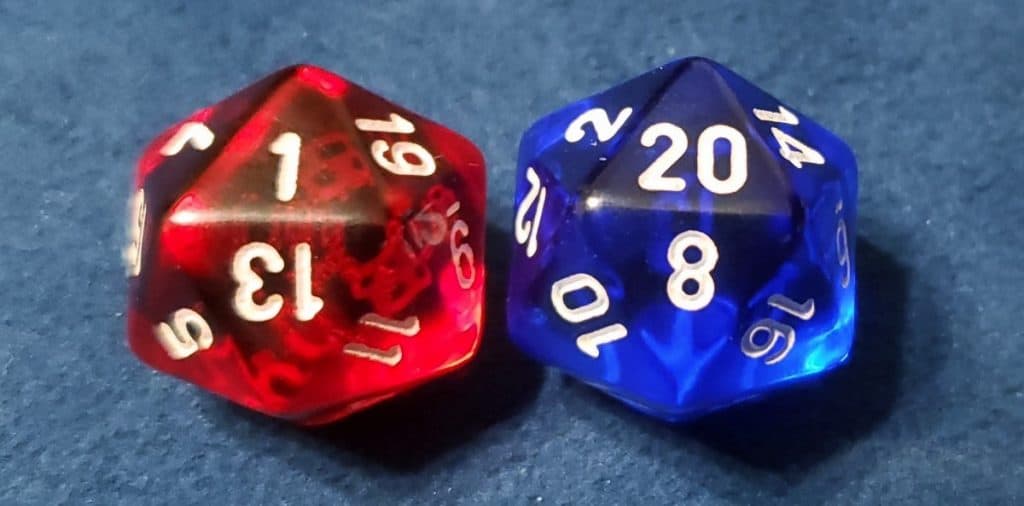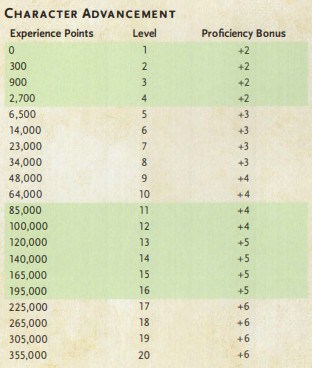The 5th edition of Dungeons & Dragons has done more for gaming and the tabletop RPG industry than any other entry in recent memory. The gameplay and management have been streamlined elegantly without becoming the number crunch of 3rd edition, but there’s still plenty of freedom for players and Dungeon Masters to create unique characters and exercise creativity in the whole storytelling experience.
Perceived barriers to entry were shattered by this comparative simplicity, leading many who had never played before to try it, see what the fuss was about, and more often than not, continue playing!
5th edition D&D isn’t perfect though. Players who have been around D&D for at least 10-15 years have noticed that the rules as printed, especially regarding areas involving class options, magic items, and feats, are incredibly constrained when compared side by side with older systems like D&D 3.5 and Pathfinder.
Too much information creates its own barrier to entry (3.5’s library takes up nearly 2 full shelves of my gaming bookshelf, and Pathfinder’s core rulebook for their first edition is a whopping 576 pages), but for many of us, 5th edition feels like an overcorrection.
Why We Need Homebrew Rules for 5E
If you want to expand your play experience beyond the core books (Player’s Handbook, Dungeon Master’s Guide, and Monster Manual) or various campaign settings, your options include Xanathar’s Guide to Everything, Volo’s Guide to Monsters, Mordenkainen’s Tome of Foes, and Tasha’s Cauldron of Everything.


That’s it. Sure, I guess there’s a group of PDFs (some of which can be printed on-demand) and the playtest content published in Unearthed Arcana, but neither of these are what I would consider mainstream content you can buy from your friendly local game store.
Considering 5th edition was originally released in 2014, ample time has also been available to plumb the depths of what these 7 books can offer. Fortunately, D&D encourages the use of creativity and imagination in most of areas of its gameplay, so the groups I belong to began to overcome this lack of content through the use of house rules.
House rules, or rules your playgroup agrees to use that differ from the rules as printed, can give you virtually unlimited freedom to customize your D&D gameplay experience. New magic items, spells, character classes, feats, rules, and more are available with just a few clicks on your keyboard or the strokes of a mechanical pencil.
The only limits are what you (or a Google search) can come up with and what your Dungeon Master (DM) is willing to allow in their campaign.
What to Watch Out for with Homebrew DnD Rules
There are trade-offs for this creative license, however. House rules that change the way the game is played can be very easy to confuse for the actual rules after a while, so if you elect to play with another group of players, you may have a rude awakening or two as you adapt to playing with them.
The other trade-off you can experience through the use of house rules is game imbalance. If your DM is inexperienced with the roles game mechanics play, has difficulty comparing new mechanics against existing mechanics, or is just overly permissive, players may end up significantly ahead of or incredibly far behind the power curve.
But most of you either know about these perks and drawbacks or don’t care and want to see which house rules get used at our table. I shall keep you waiting no longer!

Expanded Use of Critical Successes and Failures

Normally, when a player or DM rolls a natural 1 or a natural 20 on a d20 in 5th edition, it does have any additional effect on what you are doing except in the cases of attack rolls or death saving throws.
Attack rolls will automatically miss on 1s and succeed on 20s, and death saving throws will either give you 2 failures when rolling a 1 or allow you to regain a hit point on a 20 (as noted on pages 194 and 197 of the Player’s Handbook).
Most of you have probably guessed where this rule is headed, but we, like many groups, allow natural 1s and 20s to provide automatic failure or success in other types of rolls, including saving throws, skill checks, and ability checks. In combat, we have also periodically used Paizo’s critical fumble and critical hit decks to add some extra flavor to our spectacular failures and successes!
This rule doesn’t necessarily add or detract from gameplay in a meaningful way, but it adds opportunities for player character (PC) error in a high-pressure situation or extra rewards from the DM on a particularly lucky roll.
This is such a common home rule that it’s even being adopted into D&D One, aka DnD 5.5.
Expanded Attunement Slots
A lot of players come to the same conclusion when discussing low-magic systems – they just aren’t as fun as their high-magic counterparts. We appreciate the idea of putting a power cap on characters in 5th edition, and we even appreciate the move to encourage simplicity for players and DMs.
Unfortunately, the execution of the attunement system is an area where we all feel 5th edition fails, as most of the coolest gear requires attunement and 3 slots simply are not sufficient for higher level, higher magic campaigns.
So we bumped the limit up to 4.
This small change (tested over multiple campaigns) still encourages players to make decisions about what they equip, but removes a lot of the bad feelings that come with using utility items found in the Dungeon Master’s Guide like a Pearl of Power, a Ring of Mind Shielding, or Eyes of the Eagle.
All of these have the potential to be very useful throughout a campaign, regardless of level, so why not give some of this more common gear extra time in the spotlight after finding a Staff of the Magi?
Expanded Concentration
This will probably be one of the more controversial entries on this list, because it can make spellcasters very, very powerful and creates some fairly busted interactions between spells that were never intended. Normally, as per page 203 or the Player’s Handbook, you can only concentrate on 1 spell at a time. If you take damage, you must make a Constitution saving throw of 10 or half the damage, whichever is higher.
We’ve removed the limitation of only being able to concentrate on 1 spell. In exchange, if you would have to make the Constitution save to maintain concentration, the base DC of 10 is increased by 5 for each additional spell you are concentrating on (or half the damage, whichever is higher), and failure causes the loss of ALL spells you are concentrating on.
Particularly powerful spellcasters (approximately 17th level or higher) might be granted the opportunity to make a save for each spell at the heightened DC instead (at DM discretion).
Spellcasters have considerably fewer spell slots in 5th edition compared to other systems we’ve played, and magic items simply aren’t able to compensate for this thanks to a smaller library and the attunement system.
As a result, adding additional limitations on what spellcasters could do through concentration did not create a desirable play experience for any of us (who all have experience in systems with considerably more robust magic).
The inherent balance (beyond the increased save DC) is that the DM has access to these rules for non-player characters (NPCs) and enemies as well, so knowing when to exercise this heightened power and how to battle against it has added new challenge for PCs that has been well received in our campaigns.
Removing the Experience Point (XP) System
Having a system in place to measure out what each monster is worth to a party of “x” members in regard to their advancement is a good tool to ensure balance for curated environments (such as campaign books) or when used in systems that can automatically manage it for you (as in video games).
Does anybody actually enjoy manually managing this though? I know we don’t.
Abandoning this system tends to go hand in hand with creating and playing in your own homebrew campaigns.
As the DM, you’ll have a pretty good idea of when you want your players to level as they progress through the story, and as a player, not having to keep track of a number that accidentally got erased when you were adjusting something on your character sheet will take one less headache off your plate.
While it can be an okay guide for beginners, getting crunchy into the numbers just doesn’t make a lot of sense, and it doesn’t reward great roleplay, actions that are within character, even if they screw themselves over by doing it, or creative solutions.
But if you scrap the XP to just grant level ups on your own, it’s just a much better system overall.
Everybody wins here.

Expanded Use of Bonus Actions
Certain classes, spells, and abilities can give characters access to a bonus action, which behaves pretty much as it says on the tin. You get to do something extra beyond your normal move and action. According to page 189 of the Player’s Handbook, if you don’t have a perk that can be used as a bonus action, you can’t take one.
Many of us (myself included) weren’t aware that this is how the rule worked initially – coming from D&D 3.5, everyone got access to free actions, which played a role similar to 5th’s bonus action.
Having always allowed players access to a bonus action for simple tasks like a few sentences of conversation with allies or (later on) drinking a potion, we saw no reason to restrict this feature to those few lucky enough to access it when the proper rule was discovered.
Some of you are probably ready to point out that drinking a potion normally takes an entire regular action, but is spending your turn on something trivial like healing less than 10 hit points or preparing the ability to breathe fire worth it for any character above 3rd level? Is placing an entire class of item in the auto-sell pile a way to improve how you feel about finding treasure?
Of course not! Having already improved the concept of the bonus action for our gameplay, we gladly expanded it a little when the idea was presented to keep potions relevant and avoid feel-bad experiences.
Both sides of the table (players and DMs) have greatly enjoyed the change, and both healing and fire breath potions remain the prized items they should be as parties come across them in campaigns.

Those are the biggest house rules we’ve adopted, but if you have some you’d like to share with us, come let us know in our Patreon Discord! We’ve got an awesome community who talks not only about D&D, but also all other areas of gaming, fitness, movies, and more!
Plus, your support helps us continue to grow and further expand the content we put out on YouTube and Twitch. If you’re already supporting us monetarily, through follows/subscriptions, or by sharing our content with others – thank you. It means the world to us.
Other D&D Content You May Enjoy:
- Sorcerer Vs. Wizard 5E
- Fighter Vs. Barbarian 5E
- How long should a D&D Session Be?
- How to roleplay a Kenku
- How do hit dice work in D&D?
- How does passive wisdom work in DnD?
Braden is a founder of Assorted Meeples and has been a gamer & writer with a vivid imagination all his life. Don’t believe us? Check out his excitement when meeting Goosebumps author R.L. Stine as a kid! An avid Magic: The Gathering spellslinger for over 15 years, you can always convince him to shuffle up for a game (or three!) of Commander.
